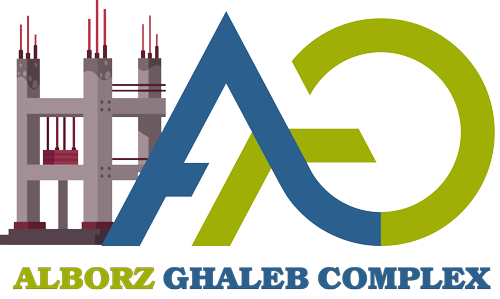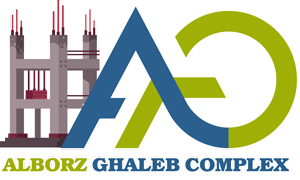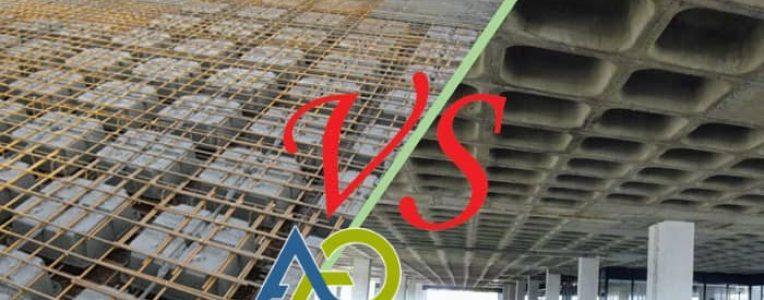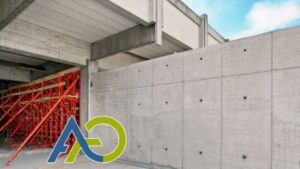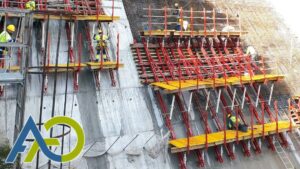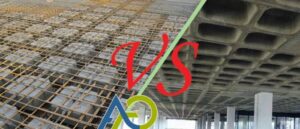Introduction: Why Choosing Between Waffle Slab and U-Boot Beton Matters
In modern construction, selecting the right slab system is critical for optimizing costs, safety, and project efficiency. Waffle Slab and U-Boot Beton, two popular voided concrete slab systems, are widely used in residential, commercial, and industrial projects due to their ability to reduce weight and material consumption. But which system is best suited for your project?
Alborz Ghaleb Complex, with decades of expertise in manufacturing modular metal formwork and delivering construction solutions, presents this comprehensive guide to the differences between Waffle Slab and U-Boot Beton in 2025. Designed for engineers, contractors, clients, and students, this article offers an in-depth comparison of technical, economic, and practical aspects to empower informed decision-making.
From structural behavior to cost estimates and real-world applications, we’ve covered it all. Dive in to find the ideal slab system for your next project!
Contact Alborz Ghaleb Complex
What Are Waffle Slab and U-Boot Beton? Definitions and History
Waffle Slab
A Waffle Slab is a two-way reinforced concrete slab system that uses removable (non-permanent) formwork to create a grid-like, coffered underside. This design reduces weight and is ideal for long spans. The concept traces back to ancient Roman vaulted structures, but it was modernized in the 20th century for high-performance construction.
U-Boot Beton
U-Boot Beton is a voided slab system that employs permanent polypropylene formers to create cubic voids within the concrete. Developed in Italy in the early 2000s, it’s designed to produce flat undersides and minimize concrete usage.
Both systems aim to lighten structures, but their design and execution differ significantly, as explored below.
Structural Comparison: Waffle Slab vs. U-Boot Beton
The structural design of each system impacts its performance and suitability. Here’s a breakdown of key differences:
- Cross-Section: Waffle Slabs form a T-shaped section due to internal ribs, offering high flexural rigidity. U-Boot Beton creates an I-shaped section with bidirectional ribs, which is less rigid.
- Weight: Waffle Slabs are lighter by ~150-170 kg/m² due to the elimination of concrete below the neutral axis.
- Voids: Waffle Slabs have open, coffered voids, while U-Boot Beton uses closed cubic voids.
- Underside Appearance: Waffle Slabs have a grid-like, coffered look, ideal for exposed ceilings, whereas U-Boot Beton provides a flat underside.
These structural distinctions influence the system’s application in various projects.
Technical Comparison: Performance of Waffle Slab and U-Boot Beton
Technical factors, including material usage, dynamic behavior, and code compliance, are critical in system selection:
Material Consumption
- Concrete: Waffle Slabs use 20-30% less concrete (~0.35 m³/m² vs. 0.45 m³/m² for U-Boot Beton).
- Reinforcement: Waffle Slabs require up to 15% less rebar due to higher stiffness.
Dynamic Behavior
- Earthquake Resistance: Waffle Slabs perform better in seismic zones due to lower weight, reducing inertial forces.
- Deflection: Waffle Slabs exhibit less deflection (~1/400 of span) compared to U-Boot Beton (~1/350).
Fire Resistance
U-Boot Beton’s plastic formers reduce fire resistance, requiring additional coatings, while Waffle Slabs, made entirely of concrete, are inherently safer.
Code Compliance
Waffle Slabs align with Iran’s National Building Code (Section 9), while U-Boot Beton may require special approvals due to limited local standards.
Economic Comparison: Costs in 2025
Cost is a decisive factor in slab selection. Based on 2025 market estimates, here’s a cost breakdown:
- Concrete Cost: ~$30-50/m³. Waffle Slabs save more due to lower consumption.
- Rebar Cost: ~$1-1.2/kg. Waffle Slabs are ~15% cheaper.
- Formwork Cost: Waffle Slab formwork (non-permanent) ~$10-15/m²; U-Boot Beton (permanent) ~$15-25/m².
- Total Cost: Waffle Slab ~$40-50/m²; U-Boot Beton ~$50-70/m².
Waffle Slabs are 20-30% more cost-effective, offering better ROI.
Get a Project Cost EstimatePros and Cons of Waffle Slab and U-Boot Beton
Waffle Slab
- Pros: Lighter weight, lower cost, reduced material use, better seismic performance, code-compliant.
- Cons: Coffered underside (may require false ceilings), requires precise formwork.
U-Boot Beton
- Pros: Flat underside, suitable for industrial projects, faster execution.
- Cons: Heavier, more expensive, lower fire resistance, regulatory challenges.
| Criteria | Waffle Slab | U-Boot Beton |
|---|---|---|
| Weight | Lighter (~170 kg/m² less) | Heavier |
| Cost (2025) | $40-50/m² | $50-70/m² |
| Seismic Performance | Better | Weaker |
| Underside | Coffered | Flat |
Applications of Waffle Slab and U-Boot Beton
Each system suits specific project types:
- Waffle Slab: Ideal for long spans (8-12 m), commercial projects (malls), and column-free structures (parking lots).
- U-Boot Beton: Best for industrial facilities (factories), flat-ceiling spaces (hospitals), and shorter spans (6-8 m).
Alborz Ghaleb Complex’s high-quality Waffle Slab formwork optimizes your projects.
Construction Steps for Waffle Slab and U-Boot Beton
Waffle Slab Construction
- Scaffolding and Props: Set up a support system using Alborz Ghaleb Complex ceiling jacks.
- Formwork Placement: Arrange Waffle Slab formwork (100x100x25 cm) with precision.
- Reinforcement: Install primary and secondary rebar.
- Concrete Pouring: Use C25 or C30 concrete with proper vibration.
- Formwork Removal: Remove formwork after 7-14 days for reuse.
U-Boot Beton Construction
- Support Setup: Similar to Waffle Slab, using jacks and scaffolding.
- U-Boot Formers: Place permanent polypropylene formers.
- Reinforcement: Install upper and lower rebar grids.
- Concrete Pouring: Pour concrete uniformly with precise vibration.
- Finishing: Flat surface, no formwork removal needed.
Alborz Ghaleb Complex’s modular formwork ensures faster and more accurate Waffle Slab construction.
Waffle Slab and U-Boot Beton vs. Cobiax
Cobiax, another voided slab system with spherical permanent formers, competes with Waffle Slab and U-Boot Beton. Key differences:
- Weight: Cobiax is lighter than U-Boot Beton but heavier than Waffle Slab.
- Cost: Cobiax (~$45-60/m²) is pricier than Waffle Slab but similar to U-Boot Beton.
- Applications: Cobiax suits residential and commercial projects with medium spans.
Waffle Slab often outperforms due to lower cost and flexibility.
Selection Guide: Waffle Slab or U-Boot Beton?
Use this checklist to choose the right system:
- Span Length: For spans over 8 m, choose Waffle Slab.
- Budget: If cost is a priority, Waffle Slab saves 20-30%.
- Underside Finish: For flat ceilings, opt for U-Boot Beton.
- Seismic Zone: Waffle Slab is safer in earthquake-prone areas.
- Construction Speed: U-Boot Beton is faster due to permanent formers.
Consult Alborz Ghaleb Complex’s experts for tailored advice.
Get Free ConsultationFrequently Asked Questions About Waffle Slab and U-Boot Beton
Is Waffle Slab cheaper than U-Boot Beton?
Which system is better for seismic zones?
Does U-Boot Beton comply with Iranian building codes?
How long does Waffle Slab construction take?
Is Waffle Slab suitable for short spans?
Conclusion: Why Choose Alborz Ghaleb Complex?
Choosing between Waffle Slab and U-Boot Beton depends on project requirements, budget, and environmental conditions. Waffle Slab, with its lower cost, lighter weight, and superior seismic performance, is often the optimal choice, while U-Boot Beton suits projects needing flat ceilings and industrial applications.
Alborz Ghaleb Complex elevates your projects with high-quality Waffle Slab formwork and expert support. From Tehran’s skyscrapers to Iran’s major dams, our products have earned the trust of engineers nationwide.
For more information, 2025 cost estimates, or free consultation, contact us today!
